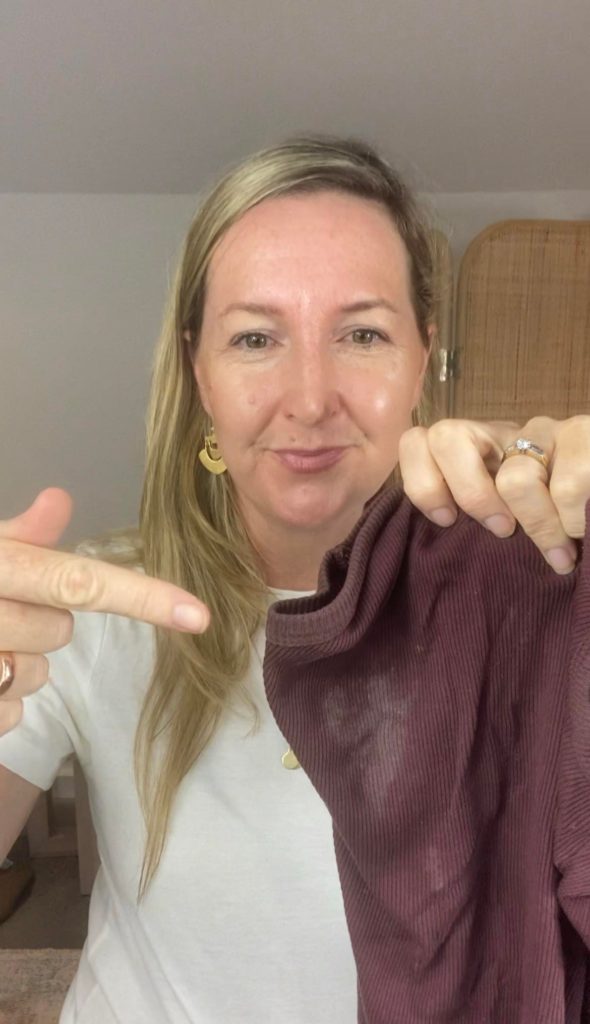Over the past few weeks and months the east coast of Australia has been soaked and with all this moisture and humidity in the air it creates the perfect conditions for our clothes and shoes to start growing mould on their surfaces, so how do we remove mould?
Mould can lead to mildew odours and even health implications such as skin reactions and respiratory issues if not properly removed. But don’t worry you don’t need to throw your clothes out at the first sign of mould spots as there are a few easy tricks and tips to get them looking fresh again. Firstly it is important to identify the spots of brown, grey, green or black mould and then check the care instructions on the garments label to determine the best course of action.
I will say I am definitely not a mould expert or professional in this area so I will only be recommending from my own experience what has worked for me in removing mould from clothes and shoes.
Soak
Before machine or hand washing your garments to remove mould, soaking them in hot water with a laundry detergent for 30 minutes to one hour will assist in lifting the spots out of the fabric before starting your wash. An old toothbrush can also be used to brush mould off the surface but remember to be gentle with the fabric.
Hot Machine Wash
If the care label says a hot wash is suitable this is one of the simplest ways to remove mould. Washing the garment on your machines hot cycle with the water temperature around 60 degrees will kill the mould spores. If the mould stain is still in place there are some natural mould treatments that can be applied.
Vinegar and Baking Soda
The combination of vinegars antifungal properties with baking soda can help to absorb the moisture of the mould and remove the odour from within the fabric. Create a solution of 1-part white vinegar to 2-parts baking soda and add this to the hot water soak or to your machine load once it has filled with water.
Borax
Borax which is also called sodium borate is a common laundry detergent with whitening properties. As a synthetic chemical free solution adding borax to your hot wash will kill and remove mould. Borax can also be mixed with vinegar to remove more stubborn moulds and stains.
Bleach
For the mould spots and stains that don’t want to move, using a chemical remover such as bleach can kill the mould and fade the stains. Firstly, check the garments don’t have any “do not bleach” warnings on the care labels. A spot test on a small hidden area is also a good idea as bleach should only be used on whites or colourfast clothes. To remove the mould the garment can be soaked or machine washed in bleach, just make sure to do this in a well-ventilated area to avoid the strong bleach fumes.
Do not mix bleach with vinegar as this can cause toxic fumes.
Dry Cleaning
For the items that cannot be hand or machine washed, taking them to your local dry cleaner and identifying the problem, then leaving it to the professionals.
Shoes
Depending on the shoes if they are a canvas sneaker or leather there are different approaches to removing the mould. Removing the mould from canvas can be done in a similar way to clothing, by soaking or washing on a high temperature. For leather first start by lightly brushing off the mould with a toothbrush. Using a cloth wipe the leather with hot water and vinegar solution until the mould is removed, placing to air dry in the sun. Once the leather shoes are completely dry I would suggest applying a leather conditioner.
Shop shoe care products here from Australian label Bared.

Preventing Mould On Your Clothes In The Future
∙ Keeping your wardrobe well ventilated giving your clothes some natural UV sunlight if possible will help prevent mould. If this is not possible, investing in a dehumidifier to minimise condensation in your wardrobe will also aid mould prevention.
Check out www.Ausclimate.com.au for dehumidifiers and air purifiers.
∙ Decluttering your wardrobe of clothes’ you no longer love or wear as this will give your other clothes more room to breathe and allow ventilation. (You Can Find My FREE Wardrobe Checklist Here To Help Guide You)
∙ When you do a load of laundry it is important to hang it out in the sun as soon as possible to air dry or alternatively in the dryer. The UV of the sun is one of the best ways to kill mould spores, just ensure they’re fully dry before taking off the line and never hang damp clothes in your wardrobe.
∙ Line your shelves with paper to control humidity. You can also use plastic liners which are easy to wash and reuse.
If you think that you have mould in your home and it’s impacting you or your family’s health and you constantly find it on your clothes, I would recommend reaching out to a Certified Mould Testing Technician such as Northern Beaches local Amy Stitt of Beaches Building Biology. www.beachesbuildingbiology.com
Want more tips and tricks like this?
Join my private Facebook group and find new tips and tricks every Tuesday!
Click Here To Join Today!






